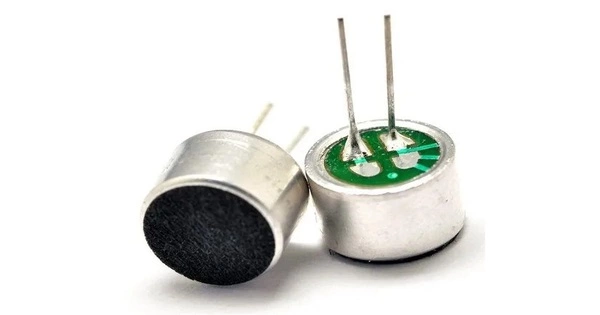An electret microphone is a type of electrostatic capacitor-based microphone that uses a permanently charged material to eliminate the need for a polarizing power supply. It is a type of condenser microphone that converts sound waves into electrical signals by using a permanently polarized material known as an electret. Because of its small size, low cost, and high performance, it is a popular choice for a wide range of applications.
An electret is a stable dielectric material with a permanently embedded static electric dipole moment (which will not decay for hundreds of years due to the material’s high resistance and chemical stability). The name is derived from electrostatic and magnet, and refers to the formation of a magnet through the alignment of magnetic domains in a piece of iron.
Electrets are commonly created by melting a suitable dielectric material, such as a plastic or wax containing polar molecules, and then re-solidifying it in a strong electrostatic field. The dielectric’s polar molecules align themselves with the direction of the electrostatic field, resulting in a permanent electrostatic “bias.” The electret in modern electret microphones is made of PTFE plastic, either in film or solute form.
Here’s how an electret microphone works:
- Electret Material: The heart of an electret microphone is the electret material itself. It is a specially treated plastic material that has a permanent static electric charge.
- Diaphragm: The electret microphone has a thin diaphragm made of a conductive material, such as metal-coated plastic. The diaphragm is placed close to the electret material.
- Backplate: Behind the diaphragm, there is a backplate that acts as a fixed electrode. The backplate is also conductive and is usually perforated to allow sound waves to pass through.
- Sound Wave Conversion: When sound waves reach the microphone, they cause the diaphragm to vibrate. These vibrations create changes in the distance between the diaphragm and the electret material, resulting in variations in the electrical capacitance between them.
- Capacitive Variation: The varying capacitance produces an electrical signal that corresponds to the sound waves. These electrical variations are very weak, so the microphone usually includes a built-in preamplifier to amplify the signal.
- Output Signal: The amplified electrical signal is then output from the microphone as an analog audio signal that can be further processed, recorded, or transmitted.
Application
Electret microphones are widely used in a variety of applications, including telecommunications, consumer electronics, computers, mobile devices, and a wide range of other devices requiring audio recording or voice communication. They provide an excellent balance of performance, size, and cost, making them a popular choice in a wide range of everyday devices.
















